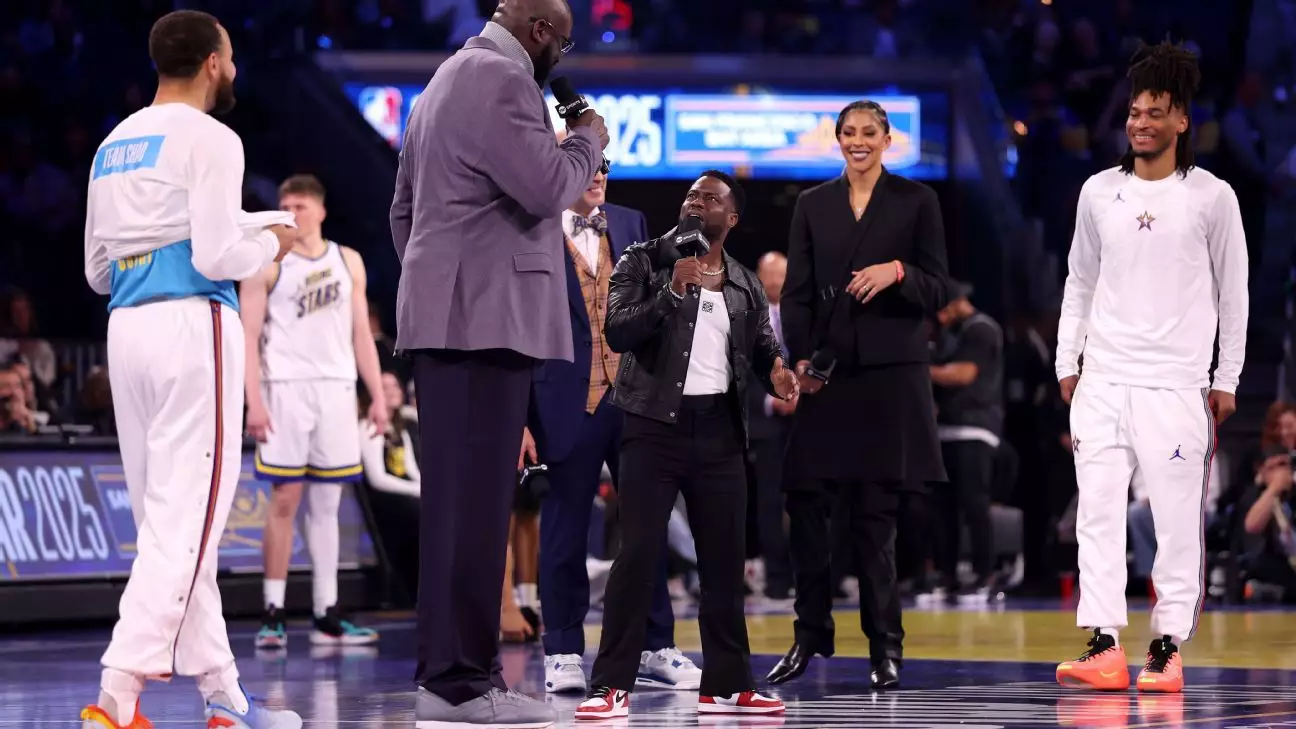The recent NBA All-Star Game showcased a shift from tradition to experimentation, as the league introduced a controversial new tournament format in San Francisco. With the departure from the conventional East vs. West rivalry, the event evolved into a four-team, single-elimination tournament characterized by a target score of 40 points in each round. However, reactions from players reveal that not everyone embraced this change, highlighting concerns about the flow of the game and the overall entertainment value.
This year’s All-Star Game saw teams organized by TNT’s “Inside the NBA” analysts, with Charles Barkley, Kenny Smith, and Shaquille O’Neal drafting their squads under creative monikers such as “Chuck’s Global Stars,” “Kenny’s Young Stars,” and “Shaq’s OGs.” The fourth team, “Candace’s Rising Stars,” consisted of players who excelled in the Rising Stars competition held earlier. While the format aimed to inject excitement into what has been criticized as a stale exhibition, several players voiced concerns over frequent game stoppages, which disrupted the momentum.
Player Trae Young was particularly outspoken, expressing dissatisfaction with the interruptions. He argued that the organizers seemed intent on extending playtime for broadcasting purposes, rather than allowing the athletes to maintain the competitive rhythm. “I didn’t like the breaks. The games were so short… it’s like they were trying to stretch out the viewing experience,” Young remarked. Such sentiments indicate a potential disconnect between the league’s intentions and the players’ expectations for a more fluid contest.
The championship match saw an unexpected delay of almost 20 minutes for a tribute to the TNT broadcast crew, causing further frustration among players and fans alike. Shai Gilgeous-Alexander, a standout for Chuck’s team, shared his thoughts post-game, noting that while the competitiveness was a positive aspect, the delays detracted from the overall experience. “I would rather play without breaks… it’s a step in the right direction, but how to enhance the experience is still up in the air,” he explained.
Others, like Jaylen Brown, echoed similar concerns about the interruptions. While maintaining that players still enjoyed the game, he highlighted the need for a balance between entertainment and physical play. “It’s not ideal to stop like that if you want guys to be physical,” Brown noted, indicating that such breaks might undermine the game’s intensity.
Despite the controversies, the championship match culminated with a standout performance from Stephen Curry, who registered 12 points and snared the All-Star MVP title. Curry had previously collaborated with NBA leadership to envision changes and breathed new life into the game. He remarked on the necessity for innovation, stating, “We needed to change… something kind of unexpected.” This perspective aligns with the current landscape of sports, where adaptability is essential for sustaining fan engagement.
However, not all players were in favor of every aspect of the change. Draymond Green, another veteran player, raised concerns about the inclusion of first- and second-year players from the Rising Stars game. He underscored his frustration on live air, observing that earlier generations didn’t get the same opportunities. “These guys get to touch the All-Star floor? On Sunday night?” Green questioned, revealing a sense of nostalgia for the exclusivity of the All-Star experience.
The Impact of Injuries on Star Power
Additionally, the absence of key figures such as LeBron James and Giannis Antetokounmpo dampened enthusiasm for the event. These star players typically draw significant viewership and contribute to the allure of the All-Star Game. Their injuries arguably limited the game’s star power, leaving an impression that the event may not have fully fulfilled its potential.
The final match-up witnessed Shaq’s OGs, comprised of seasoned players like Durant and Lillard, defeat Chuck’s team amid a backdrop of fluctuating intensity and wait times. Lillard’s game-winning shot, a deep three-pointer assisted by Durant, added a thrilling conclusion to a night that was otherwise punctuated by mixed feelings about its format.
The 2023 NBA All-Star Game sought to innovate but encountered player pushback regarding its execution. As the league contemplates future formats, it must weigh the entertainment values desired by fans against the practical preferences of its star athletes. Balancing these dimensions will be crucial in ensuring that the All-Star Game remains a highlight of the basketball calendar, satisfying both players and their audiences alike.


Leave a Reply